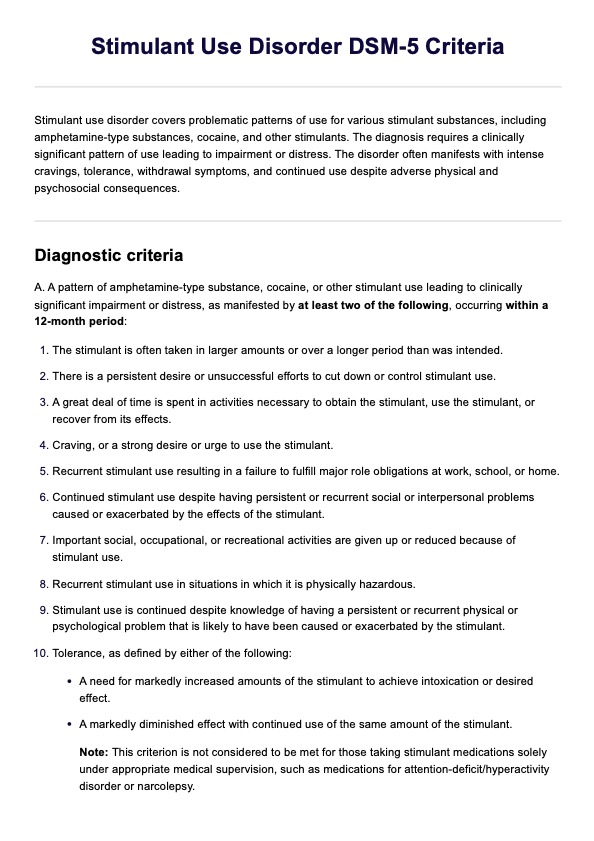A condition where individuals misuse stimulants like amphetamines or cocaine, leading to significant impairment in daily life because of the drug abuse.

Stimulant Use Disorder DSM-5 Criteria
Download a reference handout tool with our Stimulant Use Disorder DSM-5 Criteria template to use in your clinical practice.
Use Template
Stimulant Use Disorder DSM-5 Criteria Template
Commonly asked questions
It’s diagnosed based on the American Psychiatric Association's DSM-5 criteria, requiring at least two symptoms, such as inability to control use or continuing despite problems.
Yes, substance use disorders can be treated through processes such as behavioral therapies, medications for withdrawal, and support groups to help manage symptoms and promote recovery.
EHR and practice management software
Get started for free
*No credit card required
Free
$0/usd
Unlimited clients
Telehealth
1GB of storage
Client portal text
Automated billing and online payments











